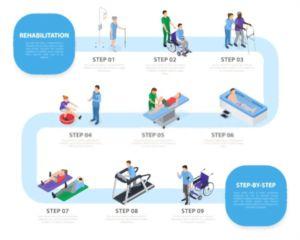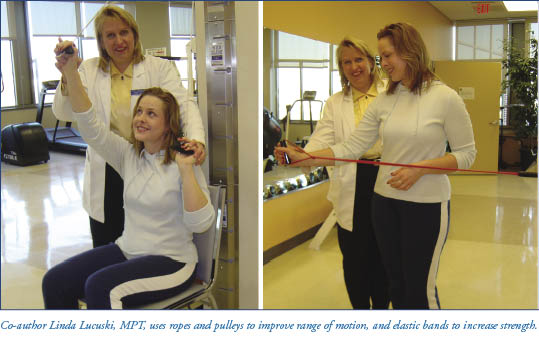The Facts About Narconon Africa Uncovered
The Facts About Narconon Africa Uncovered
Blog Article
See This Report about Narconon Africa
Table of ContentsNarconon Africa for BeginnersFascination About Narconon AfricaThe Best Strategy To Use For Narconon AfricaOur Narconon Africa Diaries6 Simple Techniques For Narconon AfricaThe smart Trick of Narconon Africa That Nobody is Talking AboutTop Guidelines Of Narconon Africa
In a collection of documents with Manudeep Bhuller and Katrine V. Lken, we get rid of these information challenges and the nonrandomness of imprisonment, providing new insights into how imprisonment impacts regression, employment, kids, and criminal networks - Drug recovery program. Number 1 Our work research studies the effects of incarceration in Norway, a setting with two key benefitsWe can further link this details to various other family members, including children and brother or sisters. We have details on co-offending that permits us to map out criminal networks for observed crimes. Second, we can utilize the random task of criminal situations to courts who vary in their tendencies to send out offenders to jail.
Some courts send out offenders to prison at a high price, while others are more forgiving. We measure a judge's stringency as the typical imprisonment rate for all various other instances a judge manages, after regulating for court and year fixed impacts, which is the level of random project. This quasi-random job of court stringency can be made use of as an instrument for incarceration, as it strongly predicts the judge's decision in the existing case, but is uncorrelated with various other instance qualities both deliberately and empirically.
Rumored Buzz on Narconon Africa
Features of prisoners, consisting of demographics and crime classifications, are generally comparable in Norway and other countries, consisting of the USA, with the exemptions that the US homicide price is much greater, and race plays a larger function there too. What attracts attention as various, specifically contrasted with the USA, is the prison system.
Figure 2In Norway, the ordinary time invested behind bars is a little over six months, which resembles most various other Western European nations. This contrasts with ordinary United States jail time of nearly 3 years, which remains in huge component the factor the USA is an outlier in its incarceration price compared to the remainder of the globe [Number 1]
The Best Strategy To Use For Narconon Africa
This gives a lot more separation in between small and solidified bad guys than exists in the USA. There is no overcrowding in Norwegian prisons and better personal safety, with each detainee being designated to their own cell and a higher inmate-to-staff proportion than in the United States (https://za.enrollbusiness.com/BusinessProfile/6708867/Narconon%20Africa#). Prisons in Norway also use well-funded education and learning, medication therapy, mental wellness, and work training programs
Our research on the impacts of imprisonment on the offender, using the arbitrary job of judges as an instrument, returns 3 vital findings. Initially, imprisonment dissuades even more criminal habits. We locate that incarceration lowers the possibility that an individual will reoffend blog within five years by 27 percent points and reduces the equivalent variety of criminal charges per person by 10 costs.
Fascination About Narconon Africa
We find large decreases in reoffending chances and advancing charged crimes also after defendants are released from jail. Our second outcome is that predisposition due to option on unobservable individual features, if overlooked, results in the wrong final thought that time invested behind bars is criminogenic. If we simply contrast criminal defendants sent to jail versus those not sent to jail, we discover favorable associations between imprisonment and succeeding crime.
This stands in contrast to our evaluation based on the random assignment of judges, which finds an opposite-signed result. Third, the reduction in criminal activity is driven by people that were not working before imprisonment. Among these people, jail time increases engagement in programs directed at improving employability and minimizing recidivism, and this ultimately elevates work and earnings while discouraging criminal behavior.

Jail time creates a 34 portion factor rise in participation in task training programs for the formerly nonemployed, and within 5 years their employment price rises by 40 percent points. At the same time, the probability of reoffending within five years is reduced by 46 percent factors, and there is a decrease of 22 in the average number of criminal fees.
Narconon Africa Fundamentals Explained

A plausible description for the difference is that Norway's jail system varies substantially, both in regards to prison-term length and prison problems, from the US jail system. While understanding the results of incarceration on the offender is an important very first step, recording spillover results is likewise essential for evaluating criminal justice plan and developing reliable jail systems.
Our Narconon Africa PDFs

Ordinary least squares estimates expose that youngsters of incarcerated fathers are 1 portion factor most likely to be billed with a crime, relative to a mean of 13 percent, and reveal no result on college qualities. Using our judge stringency instrument, we find no analytical proof that a daddy's imprisonment impacts a kid's very own criminal activity or institution qualities, yet we are unable to rule out modest-sized impacts.
Getting The Narconon Africa To Work
We define criminal teams based on network links to previous criminal cases. When a criminal network participant is jailed, their peers' possibility of being billed with a future crime lowers by 51 portion factors over the next 4 years - https://padlet.com/narconon0346/narconon-africa-zuit3dhccquzm9p9.
Report this page